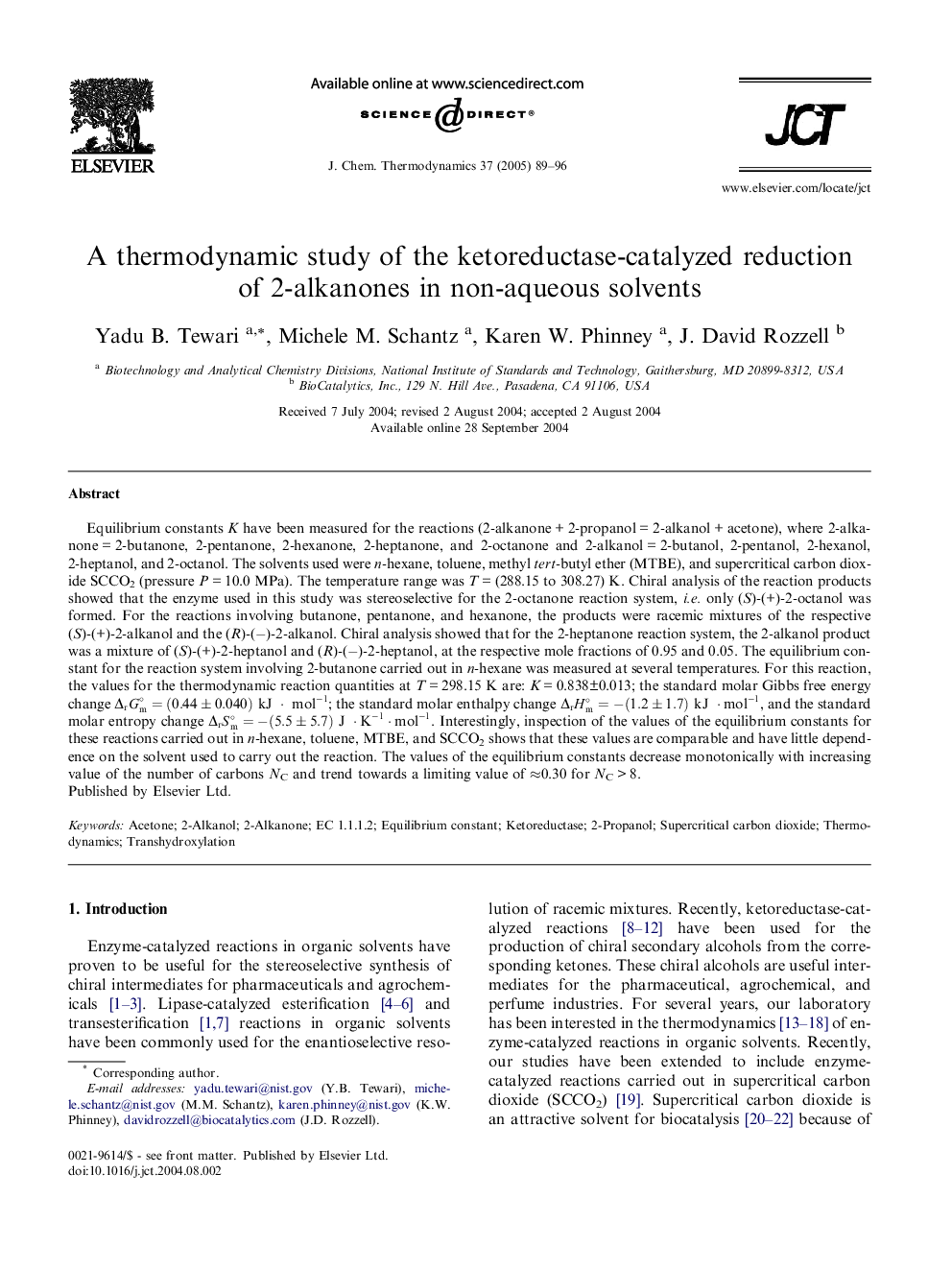| Article ID | Journal | Published Year | Pages | File Type |
|---|---|---|---|---|
| 9633637 | The Journal of Chemical Thermodynamics | 2005 | 8 Pages |
Abstract
Equilibrium constants K have been measured for the reactions (2-alkanone + 2-propanol = 2-alkanol + acetone), where 2-alkanone = 2-butanone, 2-pentanone, 2-hexanone, 2-heptanone, and 2-octanone and 2-alkanol = 2-butanol, 2-pentanol, 2-hexanol, 2-heptanol, and 2-octanol. The solvents used were n-hexane, toluene, methyl tert-butyl ether (MTBE), and supercritical carbon dioxide SCCO2 (pressure P = 10.0 MPa). The temperature range was T = (288.15 to 308.27) K. Chiral analysis of the reaction products showed that the enzyme used in this study was stereoselective for the 2-octanone reaction system, i.e. only (S)-(+)-2-octanol was formed. For the reactions involving butanone, pentanone, and hexanone, the products were racemic mixtures of the respective (S)-(+)-2-alkanol and the (R)-(â)-2-alkanol. Chiral analysis showed that for the 2-heptanone reaction system, the 2-alkanol product was a mixture of (S)-(+)-2-heptanol and (R)-(â)-2-heptanol, at the respective mole fractions of 0.95 and 0.05. The equilibrium constant for the reaction system involving 2-butanone carried out in n-hexane was measured at several temperatures. For this reaction, the values for the thermodynamic reaction quantities at T = 298.15 K are: K = 0.838±0.013; the standard molar Gibbs free energy change ÎrGmâ=(0.44±0.040)kJ·mol-1; the standard molar enthalpy change ÎrHmâ=-(1.2±1.7)kJ·mol-1, and the standard molar entropy change ÎrSmâ=-(5.5±5.7)J·K-1·molâ1. Interestingly, inspection of the values of the equilibrium constants for these reactions carried out in n-hexane, toluene, MTBE, and SCCO2 shows that these values are comparable and have little dependence on the solvent used to carry out the reaction. The values of the equilibrium constants decrease monotonically with increasing value of the number of carbons NC and trend towards a limiting value of â0.30 for NC > 8.
Keywords
Related Topics
Physical Sciences and Engineering
Chemical Engineering
Chemical Engineering (General)
Authors
Yadu B. Tewari, Michele M. Schantz, Karen W. Phinney, J. David Rozzell,
